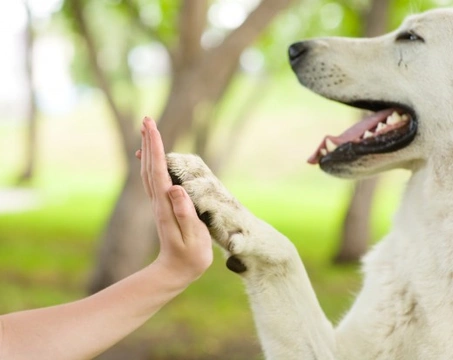
Ways in which the dewclaws can serve an important purpose for the dog
Dewclaws can be found on the front legs of virtually all dog breeds, and on the back legs of some breeds too. Some breeds even have double dewclaws, either on the front legs or the rear legs or both. Many dog owners believe that the dewclaws do not serve any useful purpose for the dog, and that they can in fact potentially be problematic and may need removal, and this is certainly the case for some dogs.
However, while the dewclaw is not an essential for good health and canine survival, the dewclaw can help the dog to do certain things, and for certain types of dogs, this can provide them with an advantage over and above that which they would have if their dewclaws were removed.
Read on to find out more about the useful purposes that the dewclaws can fulfil for some dogs.
Where are the dewclaws?
First of all, while the vast majority of dogs naturally have dewclaws, not all do, and in some dogs, they may have started life with dewclaws but later had them removed.
Most breeds have front dewclaws, which can be found above the paw on the inside of the front legs, and for dogs with rear dewclaws, these are again on the insides of the legs, just above the foot.
Why are they sometimes considered to be a problem?
Dewclaws are a natural part of your dog’s anatomy that should not theoretically pose any problem to your dog, assuming that your dog has a normal conformation and normal dewclaw development. However, the dewclaws, either front or rear, can potentially pose a problem for certain dogs, and if this is the case, the best course of action may be to have them surgically removed. If there is no good reason for removing them, the procedure should not be carried out for simply cosmetic purposes. Some of the problems that dewclaws can present include:
- Impairing movement by catching on the inside of the opposite leg, running the risk of damage to the legs and the dewclaws becoming ripped or damaged.
- Ingrown dewclaws, which may occur as the claw itself does not wear down in the way that the other claws do, as they are not in contact with the ground.
- Weak protruding dewclaws that are not strongly attached to the legs and that stick out somewhat may again be at risk of damage or injury, and again, this may necessitate their removal.
Are the dewclaws at all useful?
Dogs can and do live perfectly happily with no dewclaws, either because they were not born with them or because they needed to have them removed. But for dogs that have healthy dewclaws that do not pose a problem to them, they can actually be useful, particularly for dogs involved in canine sport or that are used for specific activities.
Each individual dewclaw is attached to a total of five tendons, which in turn are attached to a muscle. This form of connection indicates that the dewclaws are or were developed for a particular functional purpose, and for the modern dog, this can manifest in a range of different ways.
Thumb-like functions
The dewclaw of the dog is a very rough equivalent to the human thumb, although of course the dewclaw is much more primitively formed and not able to perform the whole multitude of things that people can manage with our opposable digits!
While dogs can’t move their dewclaws independently as we can do with our thumbs, the dewclaws can be useful for things such as helping your dog to grasp an object such as a toy or a bone, to scratch an itch that they could not otherwise reach, or to remove debris from between their teeth!
The Catahoula Leopard dog is one breed of dog that makes full use of their dewclaws, as this breed has the very distinctive trait of being able to climb trees, something that most dogs cannot do! Their dewclaws help them to maintain traction and security when going up and coming back down again, and are an essential part of climbing.
Dewclaws for working dogs and agility dogs
Working dogs often have their dewclaws removed as standard, to prevent damage and injuries later on. But for dogs that retain their dewclaws, they can actually give the dog an edge in working roles and in agility competitions and other fast-paced canine sports.
The dewclaws help to provide support to the lower legs of the dog, and when the dog makes a sudden turn at high speed, the dewclaws can help to anchor the turn, preventing sliding and overrunning the target. They also serve as a type of brake to stop the leg twisting when turning at high speed, helping to potentially prevent injuries that can arise in fast paced canine sports.
This can give the dog an advantage in competition, by helping them to shave a few seconds off their time around the ring!



